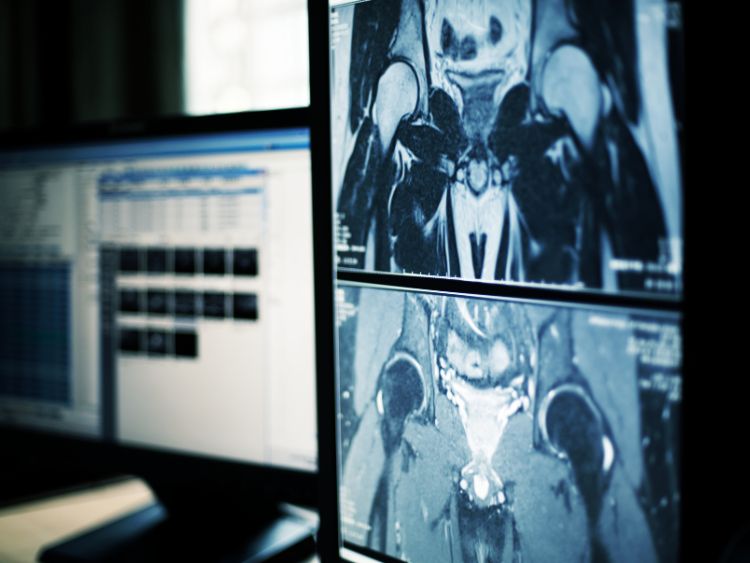In the fast-evolving world of healthcare, prime medical imaging stands as a cornerstone, revolutionizing how diagnoses are made and treatments are planned. This transformative technology, encompassing a range of sophisticated imaging techniques, has opened new horizons in medical science, offering clearer, more precise views of the human body. But what exactly makes prime medical imaging so pivotal? Let’s dive into the heart of this groundbreaking field, exploring its nuances, advancements, and the profound impact it has on both patients and healthcare professionals.
The Essence of Prime Medical Imaging
At its core, prime medical imaging refers to the use of advanced imaging technologies to capture detailed images of the internal structures of the body. These images play a crucial role in early diagnosis, effective treatment planning, and monitoring the progress of diseases. From magnetic resonance imaging (MRI) to computed tomography (CT) scans, and beyond, prime medical imaging technologies provide a window into the intricate workings of the human body, enabling healthcare providers to make informed decisions with greater confidence.
Why It’s a Game-Changer
- Early Detection and Diagnosis: Prime medical imaging allows for the early detection of diseases, often before symptoms appear, leading to earlier intervention and better outcomes.
- Precision and Clarity: High-resolution images offer unprecedented clarity and detail, enhancing diagnostic accuracy.
- Non-Invasive Procedures: Many imaging tests are non-invasive, reducing the risk of complications and making the process more comfortable for patients.
- Guided Treatment Plans: Imaging results guide healthcare providers in choosing the most effective treatment plans, tailoring interventions to the specific needs of each patient.
The Spectrum of Prime Medical Imaging Technologies
Prime medical imaging encompasses a variety of technologies, each with its unique strengths and applications. Here’s a closer look at some of the most prominent:
- MRI (Magnetic Resonance Imaging): Offers detailed images of soft tissues, organs, and bones using magnetic fields and radio waves.
- CT (Computed Tomography) Scans: Provides cross-sectional, 3D images of the body, ideal for diagnosing diseases and injuries in bones and internal organs.
- Ultrasound: Uses sound waves to produce images of the inside of the body, commonly used in obstetrics and cardiology.
- X-rays: The oldest form of medical imaging, primarily used to view bones and detect fractures or infections.
- PET (Positron Emission Tomography) Scans: Highlights how tissues and organs are functioning by tracing a radioactive substance introduced into the body.
Each of these technologies has its place in the medical imaging spectrum, offering valuable insights that guide patient care.
The Impact on Healthcare
The influence of prime medical imaging on healthcare is profound and multifaceted:
- Improved Diagnostic Accuracy: Enhanced image quality leads to more accurate diagnoses, reducing the likelihood of misdiagnosis.
- Tailored Treatment Strategies: Detailed insights into the body’s internal workings allow for more personalized and effective treatment plans.
- Better Patient Outcomes: Early detection and precise treatments improve patient recovery rates and outcomes.
- Efficiency and Cost-Effectiveness: Streamlined diagnostic processes save time and reduce healthcare costs.
Navigating Challenges
Despite its benefits, prime medical imaging is not without challenges. Issues such as high costs, accessibility in underserved regions, and the need for specialized training for healthcare professionals must be addressed to maximize its potential. Ongoing advancements in technology and efforts to improve healthcare infrastructure are crucial in overcoming these hurdles.
FAQs
Q: Is prime medical imaging safe? A: Generally, yes. Most imaging techniques are safe, though some, like X-rays and CT scans, involve low levels of radiation. The benefits often outweigh the risks, but it’s important to discuss concerns with healthcare providers.
Q: How do I prepare for a medical imaging test? A: Preparation varies depending on the type of imaging. For some tests, you may need to fast or avoid certain medications. Your healthcare provider will give you specific instructions based on the imaging test you’ll undergo.
Q: Can anyone undergo prime medical imaging? A: While most people can safely undergo medical imaging, certain conditions, such as pregnancy or the presence of metal implants, may limit the use of specific techniques. Always inform your healthcare provider of any such conditions.
Summary
Prime medical imaging represents a pivotal advancement in modern healthcare, offering unparalleled insights into the human body that drive early detection, diagnosis, and personalized treatment. As technology advances, the potential of medical imaging only expands, promising even greater breakthroughs in patient care and medical research. By addressing current challenges and making these technologies more accessible, the future of healthcare looks brighter, with prime medical imaging leading the way towards more effective, efficient, and patient-centered care.
In a landscape where precision and early intervention can make all the difference, prime medical imaging emerges not just as a tool but as a beacon of hope, illuminating the path to better health outcomes and transforming the face of medical care for generations to come.



